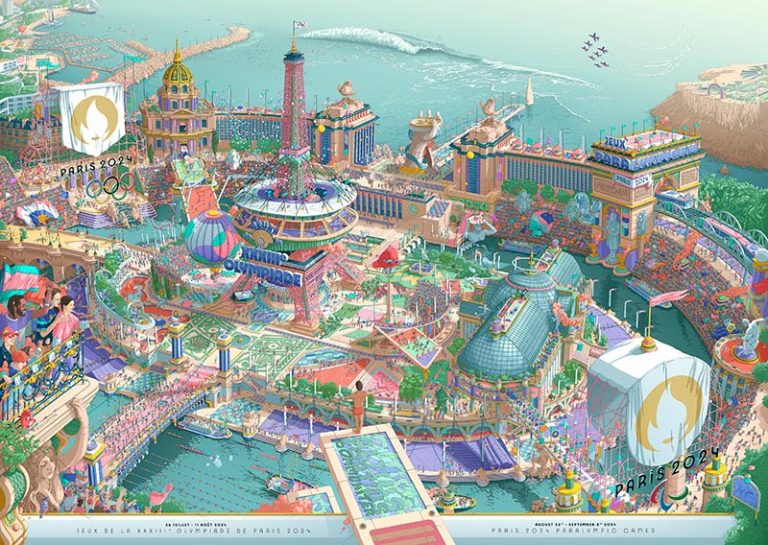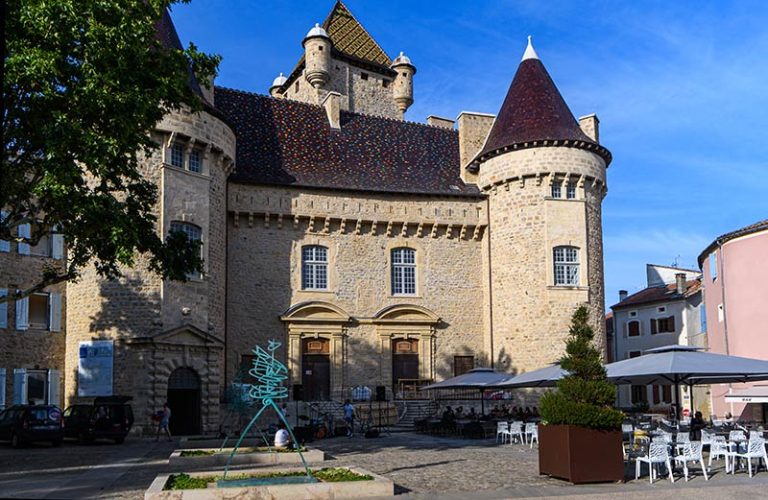Bourges. At Bourges town hall, the competition for the designation of the 2028 European Capital of Culture has been summarized since March 3, the date on which the four finalist cities were revealed, in a slogan: “There are two finalists, the metropolises and Bourges. » The mayor, like his deputy for culture, likes to return Clermont-Ferrand, Montpellier and Rouen to their advantageous status as dynamic, attractive and culturally well-endowed metropolises. And it is not to shoot himself in the foot that the elected official points out the gulf which separates his urban community, in terms of number of inhabitants, from his competition, but on the contrary to underline the originality and the relevance of this candidacy: the “yellow vest” crisis has brought back into the political debate a so-called “peripheral” France, between city and rurality, i.e. a network of medium-sized towns in which half of Europeans live.
A strong cultural fabric
“Small and medium-sized towns suffer from a pejorative narrative, nothing would happen therenotes Louise Tournillon, general coordinator of Bourges 2028. But they are also ideal territories for innovation, the decision-making circuits are short, people know each other, there are no large administrative layers, and a lot of sharing. » To be convinced, just take a tour of the places that hosted the “Bourges Contemporain” event this summer. From the cultural wasteland of Antre Peaux to La Box, exhibition hall of the National School of Fine Arts (Ensa) of Bourges, via La Transversale, a place dedicated to contemporary art within a high school, everyone knows each other and helps each other. Need a projector to finalize the student exhibition at La Box? L’Antre Peaux provides its equipment. Are there windows missing a few days before an opening? The manager of the Jacques-Cœur Palace will certainly be able to lend some…
“It’s easy to work together, because we’re neighbors, we meet at the bakery! says Sandra Émonet, manager of La Box. As soon as it is possible to do so, we pool, there is no logic of competition. I’ve worked in larger communities where it doesn’t happen like that at all. » “For us, these collaborations are vital, we could not get by without them”, adds Emmanuel Ygouf, plastic arts teacher in preparatory class. Like this teacher, who every year invites artists and students from Ensa to the walls of his high school, personal or associative initiatives form the glue of the Berruyer cultural landscape. Thus, Antre-Peaux, one of the first artistic wastelands in France, has real expertise in the production of live performance works and exhibitions. Born from the federation of several associations, it houses the Nadir, a contemporary music room, and Transpalette, an art center whose exhibitions are curated by Julie Crenn. L’Antre Peaux organizes the “Bourges Contemporain” summer artistic trail, the 4th edition of which this year was.
It was first of all to promote and consolidate this active artistic fabric that the idea of the application was launched: “Bourges has an important artistic heritage, one of the seven Ensa, one of the first “wastelands” in France, it is important to unite these energies around a major project,” explains Yannick Bedin, deputy for culture at Bourges town hall. The City uses the candidacy to structure its cultural ecosystem – factor of“attractiveness” for the deputy mayor – but also to initiate reflection on certain themes. Like mobility, a real subject of concern for this city far from the main TGV lines: the application thus instills the idea of a European night train which would serve Bourges, and reports discussions “well advanced” with the SNCF.
Social cohesion
Rural and peri-urban France is also at the heart of Bourges 2028, which wants to include all interstitial spaces in its programming. “Suburban areas are a real blind spot. Where do we put culture in that? “, asks Yannick Bedin, who sees culture as a lever for regional planning. “These guidelines are very much in line with what the European Union wantsanalyzes Anne-Marie Autissier, sociologist of culture and media at Paris-VIII University. The applications must be a springboard for better cohesion both in the city and in the conurbation. »
By transforming its weaknesses into a driving force, Bourges 2028 responds to a key requirement of the European Capital program, expected by Brussels. But its reduced budget, which will probably not be extended, constitutes a point of concern for the jury: it will be around 40 million euros, where the “Capitals” of Western Europe display a budget median of 60 million euros. The choice of Bourges would thus represent a real gamble, riskier than the metropolises, but with possibly greater repercussions. “It will be a question of audacity of the jury for Bourges, says Anne-Marie Autissier. Will he choose a city on a human scale, which has development difficulties which could be resolved with the candidacy? » Profiles similar to that of Bourges have already received the title of European Capital of Culture, such as Matera in Italy (2019) or Eleusis in Greece (2023).







